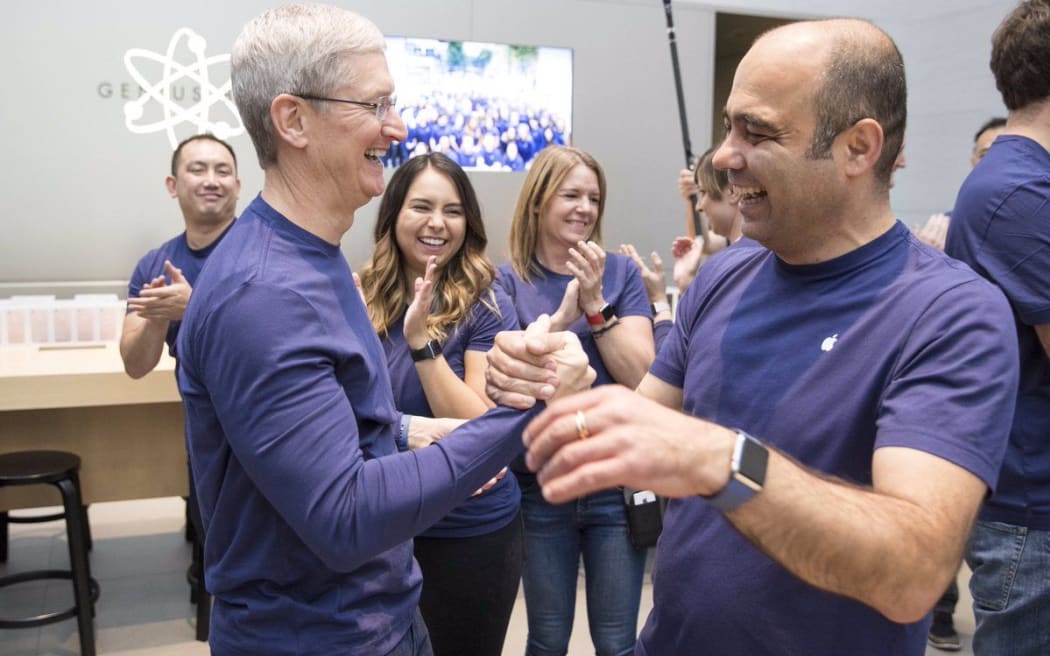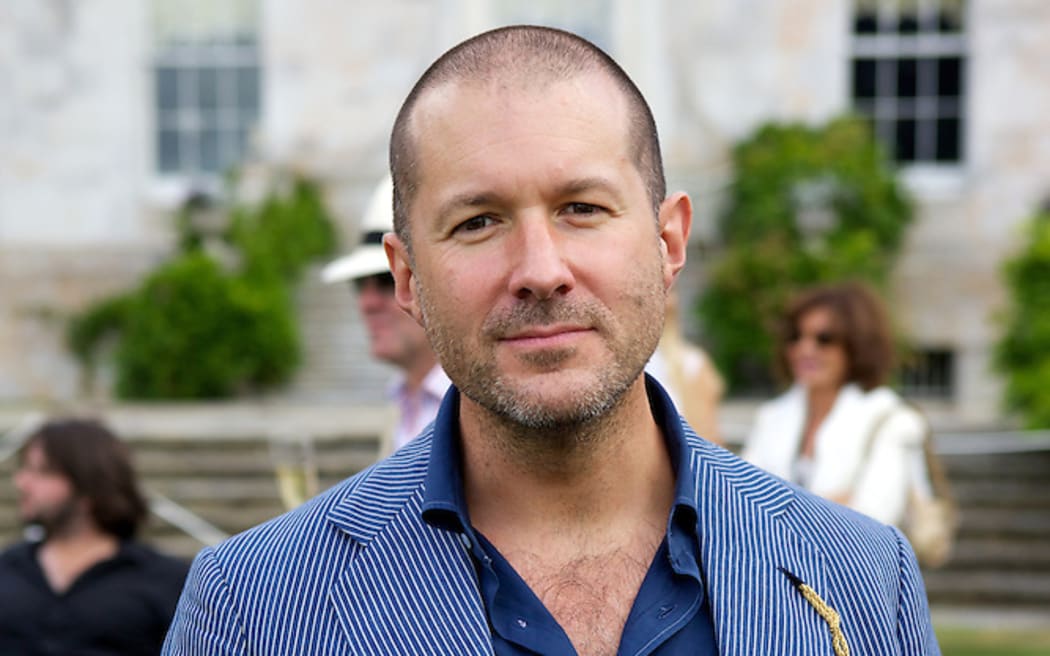Much has been written about the controversial Apple co-founder Steve Jobs, but less so about what happened at the tech company after his death in 2011.
Since then, Apple's massive success has been due to collaboration as much as innovation, says New York Times tech reporter Tripp Mickle.
He explores the company's post-Jobs culture change in the new book After Steve: How Apple Became a Trillion-Dollar Company and Lost Its Soul.

Apple CEO Tim Cook with Apple Store employees Photo: Tim Cook / Twitter
When Steve Jobs died from pancreatic cancer, many wondered whether the company could maintain its stellar trajectory, Mickle tells Kathryn Ryan.
Within the company, Jobs had several options from which to choose a successor.
Though notoriously private, Apple's then chief operating officer Tim Cook had a lot of experience managing people.
He was also responsible for creating the company's super-efficient supply chain which, in 2011, accounted for more than half of its worth.
But although Cook was the logical choice to lead Apple into the future, he had his work cut out for him following Jobs.
"What he had to do was figure out how to restructure this company that was designed to orbit around Jobs like the sun and defer to him for all decision-making.
“It took several years but ultimately what Cook was able to introduce was a system where decisions were made by consensus more so than by decree.”

Apple co-founder Steve Jobs attends a press conference in central London, 18 September 2007 after the release of the first iPhone. Photo: AFP / Shaun Curry
While Cook had always been a somewhat private figure, Apple's talented chief design officer Jony Ive was relatively well-known.
Jobs even described Ive, who'd worked for Apple since 1992, as the second most powerful person at the company after himself.
“Jony Ive was his creative soulmate and the two of them would spend most of their time talking up and dreaming up many of the ideas that Apple would pursue and develop from a product standpoint.”
Ive is apparently a design prodigy, Mickle says, and Jobs saw the value of his talent.
“Initially Jobs needed to burnish the image of the people who were working for the company and so he pushed and promoted people like Jony Ive after the launch of the iMac.
“But then after it found its footing, he began to secret those people away so that nobody would poach them.”

Photo: Supplied
To the outside world, it appeared that most of what Apple designed came from the mind of Steve Jobs – the man on stage.
He created a fortress of secrecy around Apple both to provide the company with a competitive advantage and preserve the mystery of its product launches, Mickle says.
“I think it's hard to appreciate how indoctrinated the culture of secrecy was. It was very much like Fight Club; the first rule of Apple is you don’t talk about Apple.”
Even now, people who work in different divisions of the company don’t often talk to each other about what they are working on, Mickle says.
He knows of a married couple working in different teams who didn’t share with each other what projects they worked on until years after they had both left.
Apple’s designers, which included a DJ, a coffee expert and several surfers, were regarded by some as the company’s Jedis and by others as rockstars.
“They were the cool kids on campus, the design story where they work was known as the holy of holies. It had a different energy than most of the campus did.”
Jony Ive grew up around industrial design, which his father taught.
“His talent was so much that in high school when he designed a projector for his teacher, his teacher went and interrogated his father because it was so sophisticated."

Sir Jonathan Ive at a party in 2010. Photo: Marcus Dawes
In the wake of Jobs’ death, Ive became incredibly important to Apple and spearheaded the development of the Apple Watch – the only new product category the company has created since.
Yet between 2015, when the Apple Watch was launched, and 2019, the culture of Apple changed and people were getting frustrated with Ive, Mickle says.
Previously, Jobs had empowered and protected Ive and his team to the extent that Apple's design studio had become a sanctuary with its own rules.
“Among those rules was you don’t talk about cost.”
If anyone did speak up, they would find their access to the studio quietly revoked, he says.
During the development of the Apple Watch, though, people in the company's operations department began to defy the design team, asserting they could develop components at a lower price.
When it was decided that decisions would require consensus between Apple's departments, Ive was forced to engage in political infighting to push his idea forward.
He believed the company was losing what he considered some of its right-brain sensibilities.
“These things were all snowballing at a time that led Jony Ive to feel like that Talking Heads song where he just didn’t recognise the place he was waking up anymore. He went to Tim Cook, asked to step back from the company and eventually did so in 2019.”

